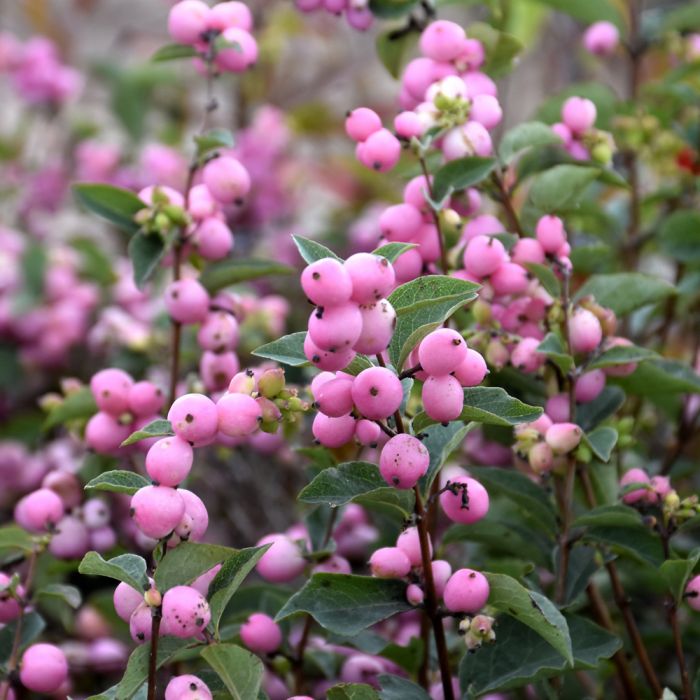Top Ten Shrubs
Tim's Top Ten Shrub Recommendations!



Out of stock
Coming soon, still growingA versatile small shrub valued for its clusters of candy-pink glossy berries that persist into winter along the gracefully arching branches, great for cutflower arrangements, a highly ornamental compact rounded shrub; excellent for mass plantings.
Elevate your landscaping with Gertens' unmatched variety of shrubs! Selecting the right shrubs for your backyard can enhance its beauty and functionality. Consider factors like sunlight, soil type, and mature size when choosing shrubs. For sunny areas, flowering shrubs like roses or hydrangeas can add color and charm. In shady spots, opt for shrubs like azaleas or hostas. Evergreen shrubs provide year-round interest and privacy, while deciduous shrubs offer seasonal color changes. At Gertens, we offer a wide selection of shrubs to suit every backyard need.
Height: 3 feet
Spread: 3 feet
Sunlight: ![]()
![]()
![]()
Hardiness Zone: 3b
Other Names: Hybrid Snowberry
Brand: First Editions
Description:
A versatile small shrub valued for its clusters of candy-pink glossy berries that persist into winter along the gracefully arching branches, great for cutflower arrangements, a highly ornamental compact rounded shrub; excellent for mass plantings
Ornamental Features
First Editions® Candy™ Coralberry is primarily grown for its highly ornamental fruit. It features an abundance of magnificent hot pink berries from early fall to late winter. It features subtle white bell-shaped flowers with pink overtones along the branches in early summer. It has bluish-green foliage with grayish green undersides throughout the season. The oval leaves do not develop any appreciable fall color.
Landscape Attributes
First Editions® Candy™ Coralberry is a dense multi-stemmed deciduous shrub with a shapely form and gracefully arching branches. Its average texture blends into the landscape, but can be balanced by one or two finer or coarser trees or shrubs for an effective composition.
This shrub will require occasional maintenance and upkeep, and can be pruned at anytime. It is a good choice for attracting birds to your yard, but is not particularly attractive to deer who tend to leave it alone in favor of tastier treats. Gardeners should be aware of the following characteristic(s) that may warrant special consideration;
First Editions® Candy™ Coralberry is recommended for the following landscape applications;
Planting & Growing
First Editions® Candy™ Coralberry will grow to be about 3 feet tall at maturity, with a spread of 3 feet. It tends to fill out right to the ground and therefore doesn't necessarily require facer plants in front. It grows at a fast rate, and under ideal conditions can be expected to live for approximately 15 years.
This shrub performs well in both full sun and full shade. It is very adaptable to both dry and moist locations, and should do just fine under typical garden conditions. It is not particular as to soil type or pH. It is somewhat tolerant of urban pollution. This particular variety is an interspecific hybrid.
| SKU | Container Size |
| S2825 | #2 Container (2 Gallon) |
* Not all container sizes may be available at this time. See store for details on specific container size availability.
| Gerten Grown Plants | Gerten Grown Plants |
|---|---|
| Bloom Time | June, July, August |
| Sun Preference | Full-Sun, Part-Sun |
| Mature Height (Range) | 2 - 5 feet |
| USDA Hardiness Zone | 4, 5, 6, 7 |
| Common Family Name | Snowberry |